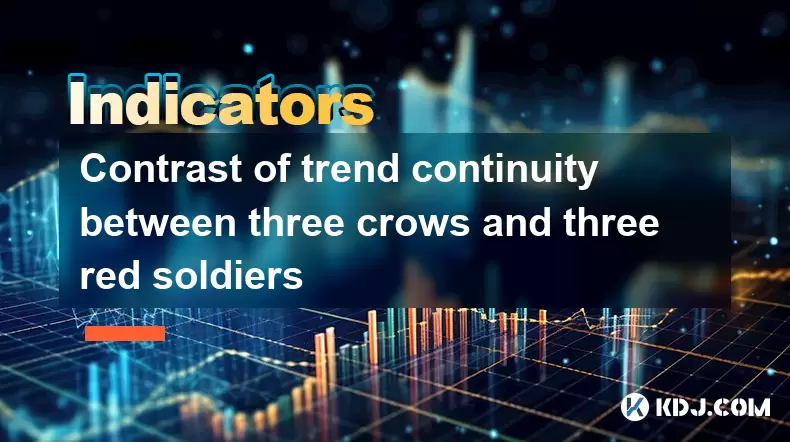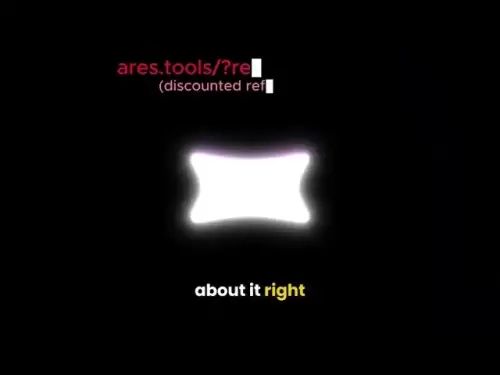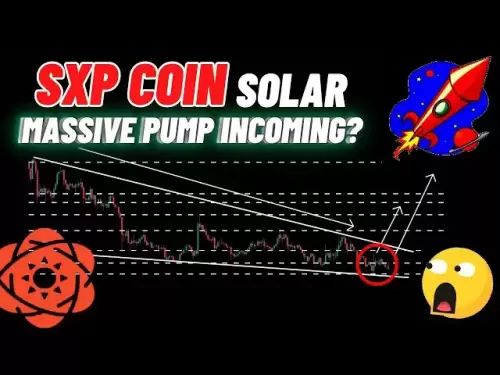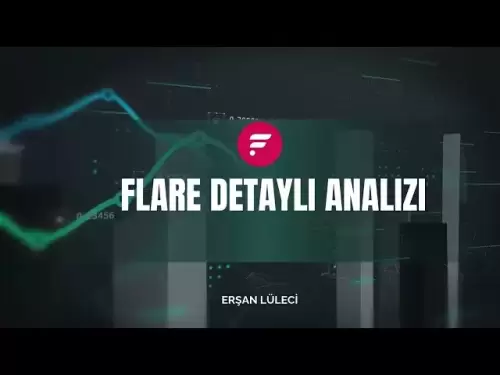-
 Bitcoin
Bitcoin $117500
2.04% -
 Ethereum
Ethereum $3759
3.02% -
 XRP
XRP $3.171
3.30% -
 Tether USDt
Tether USDt $1.000
0.03% -
 BNB
BNB $782.4
2.52% -
 Solana
Solana $187.2
5.62% -
 USDC
USDC $0.0000
0.02% -
 Dogecoin
Dogecoin $0.2380
5.26% -
 TRON
TRON $0.3175
1.07% -
 Cardano
Cardano $0.8227
4.03% -
 Hyperliquid
Hyperliquid $44.50
5.44% -
 Sui
Sui $4.020
10.07% -
 Stellar
Stellar $0.4396
6.28% -
 Chainlink
Chainlink $18.32
4.55% -
 Hedera
Hedera $0.2628
10.71% -
 Bitcoin Cash
Bitcoin Cash $554.8
4.90% -
 Avalanche
Avalanche $24.20
4.60% -
 Litecoin
Litecoin $113.7
2.31% -
 Shiba Inu
Shiba Inu $0.00001413
5.99% -
 UNUS SED LEO
UNUS SED LEO $8.984
0.11% -
 Toncoin
Toncoin $3.326
7.22% -
 Ethena USDe
Ethena USDe $1.001
0.00% -
 Uniswap
Uniswap $10.49
4.56% -
 Polkadot
Polkadot $4.092
4.02% -
 Monero
Monero $326.6
1.30% -
 Dai
Dai $1.000
-0.01% -
 Bitget Token
Bitget Token $4.570
2.49% -
 Pepe
Pepe $0.00001267
5.10% -
 Aave
Aave $297.3
3.10% -
 Cronos
Cronos $0.1344
4.10%
Contrast of trend continuity between three crows and three red soldiers
The Three Crows pattern signals a bearish reversal after an uptrend, with three long red candles showing sellers taking control in crypto markets.
Jul 25, 2025 at 05:21 am

Understanding the Three Crows Pattern in Cryptocurrency Trading
The Three Crows pattern is a bearish reversal formation that typically appears at the end of an upward price trend in cryptocurrency markets. This pattern consists of three consecutive long red (or black) candles, each opening within the body of the previous candle and closing progressively lower. The structure indicates a steady shift in market sentiment from bullish to bearish. Each candle in the sequence reflects strong selling pressure, with minimal upper wicks, suggesting that sellers are in control from the opening to the close. The emergence of this pattern often signals that buyers are losing momentum and sellers are taking over. Traders monitor this formation closely, especially when it appears after a prolonged rally in assets like Bitcoin or Ethereum, as it may precede a significant downturn.
Characteristics of the Three Red Soldiers Pattern
In contrast, the Three Red Soldiers pattern is a bullish reversal signal that forms after a downtrend in the cryptocurrency market. It consists of three successive long green (or white) candles, each opening within the body of the prior candle and closing at or near its high. This pattern reflects consistent buying pressure and growing confidence among market participants. The absence of long lower wicks suggests that buyers are in control throughout each trading period. The gradual increase in closing prices and the strong upward momentum indicate a potential shift from bearish to bullish sentiment. This pattern is particularly significant when observed in high-volume markets, such as during major altcoin rallies, where sustained buying activity can trigger extended upward movements.
Key Differences in Market Context and Implication
The Three Crows and Three Red Soldiers patterns are mirror images in terms of structure and implication, but they occur in opposite market conditions. The Three Crows appear after an uptrend, signaling exhaustion among buyers and the beginning of a bearish phase. In contrast, the Three Red Soldiers emerge after a downtrend, indicating that sellers have lost control and buyers are regaining strength. The context of the prevailing trend is crucial for correctly identifying and interpreting these patterns. For instance, if Bitcoin has been rising for several days and then forms three long red candles with lower closes, the Three Crows pattern may suggest an impending correction. Conversely, if Ethereum has been declining and then forms three strong green candles with higher closes, the Three Red Soldiers could indicate the start of a new bullish phase.
Visual and Structural Comparison
When analyzing candlestick charts, the visual distinction between these two patterns is critical. For the Three Crows:
- Each candle is red (bearish).
- Candles open within the body of the previous candle.
- Each candle closes lower than the previous one.
- Minimal upper wicks, indicating strong selling pressure throughout the session.
For the Three Red Soldiers:
- Each candle is green (bullish).
- Candles open within the prior body, preferably near the middle.
- Each candle closes higher than the last, ideally at or near its peak.
- Little to no lower wicks, showing buyers dominate from open to close.
These structural traits help traders differentiate between the two patterns even in volatile crypto markets where price movements can be erratic. Proper identification requires clean chart patterns and confirmation from volume indicators.
Confirmation and Validation Techniques
To avoid false signals, traders often use additional tools to confirm the validity of these patterns. For the Three Crows:
- Check if trading volume increases with each red candle, reinforcing selling pressure.
- Look for bearish divergence on the RSI indicator—price makes higher highs while RSI makes lower highs.
- Confirm with a break below a key support level after the third candle.
For the Three Red Soldiers:
- Ensure volume rises with each green candle, validating strong buying interest.
- Watch for bullish RSI divergence—price makes lower lows while RSI makes higher lows.
- Confirm with a breakout above a resistance level following the third candle.
Using Bollinger Bands, traders might observe the Three Crows forming near the upper band, suggesting overbought conditions, while the Three Red Soldiers often appear near the lower band, indicating oversold conditions. These technical overlays enhance the reliability of the patterns.
Practical Trading Strategies Based on Pattern Recognition
When the Three Crows pattern is identified:
- Consider closing long positions or reducing exposure.
- Initiate short positions after the third candle closes, placing a stop-loss above the high of the first crow.
- Use take-profit levels based on Fibonacci retracement levels from the prior uptrend.
When the Three Red Soldiers pattern appears:
- Consider entering long positions after the third green candle closes.
- Set a stop-loss below the low of the first soldier to limit downside risk.
- Target resistance levels or use Fibonacci extensions to estimate upside potential.
It is essential to combine these strategies with risk management principles, such as limiting position size to a small percentage of capital. Backtesting these setups on historical cryptocurrency data—such as BTC/USDT or ETH/USDT pairs—can help refine entry and exit rules.
Frequently Asked Questions
Can the Three Crows pattern appear in a sideways market?
Yes, the Three Crows can form during consolidation phases, but they lack strong predictive power unless they occur after a clear upward trend. In sideways markets, the pattern may reflect temporary weakness rather than a true reversal. Traders should look for additional confirmation, such as a breakdown below a consolidation range, before acting.
Is the Three Red Soldiers pattern reliable in low-volume altcoins?
The reliability decreases in low-volume altcoins due to higher price manipulation risks and erratic candle formations. The pattern is more trustworthy in high-liquidity markets like major cryptocurrencies. Volume confirmation is even more critical in lesser-known tokens to avoid false breakouts.
How long should each candle be for the patterns to be valid?
Each candle should have a substantial real body, meaning the difference between open and close is large relative to the overall range. Ideally, the body should make up more than 70% of the candle’s total length, with minimal wicks. Short or doji-like candles invalidate the pattern.
Can these patterns be used on different timeframes?
Yes, both patterns can appear on any timeframe, from 15-minute charts to weekly charts. However, signals on higher timeframes (e.g., daily or weekly) carry more weight due to stronger participation and reduced noise. A Three Red Soldiers pattern on the daily chart is more significant than one on the 1-hour chart.
Disclaimer:info@kdj.com
The information provided is not trading advice. kdj.com does not assume any responsibility for any investments made based on the information provided in this article. Cryptocurrencies are highly volatile and it is highly recommended that you invest with caution after thorough research!
If you believe that the content used on this website infringes your copyright, please contact us immediately (info@kdj.com) and we will delete it promptly.
- Vaultz Capital's Bitcoin Bet: A Strategic Shift on the Aquis Exchange
- 2025-07-26 20:30:12
- Pi Coin, Wallet Features, and Coinbase: What's the Buzz?
- 2025-07-26 18:30:12
- Worldcoin, Punisher Coin, and the Meme Coin Mania: What's the Haps?
- 2025-07-26 18:30:12
- Conviction, Justice System, and Murders: A Look at Recent Cases and Shifting Perspectives
- 2025-07-26 18:50:11
- Shiba Inu, Remittix, and the Market Surge: What's the Hype?
- 2025-07-26 19:10:12
- Cardano Price, ADA Holders, and Leadership Criticism: What's the Real Deal?
- 2025-07-26 19:30:12
Related knowledge

What does it mean that the rebound is blocked after the moving average is arranged in a short position for the first time?
Jul 26,2025 at 10:51am
Understanding the Short-Term Moving Average ConfigurationWhen traders refer to a 'short position arrangement' in moving averages, they are describing ...

What does it mean that the parabolic indicator and the price break through the previous high at the same time?
Jul 26,2025 at 07:22pm
Understanding the Parabolic Indicator (SAR)The Parabolic SAR (Stop and Reverse) is a technical analysis tool developed by J. Welles Wilder to identify...

What does it mean when the price rises along the 5-day moving average for five consecutive days?
Jul 26,2025 at 08:07am
Understanding the 5-Day Moving Average in Cryptocurrency TradingThe 5-day moving average (5DMA) is a widely used technical indicator in cryptocurrency...

What does it mean when ADX breaks through 25 and +DI continues to rise?
Jul 26,2025 at 07:00pm
Understanding the ADX Indicator and Its ThresholdsThe Average Directional Index (ADX) is a technical analysis tool used to measure the strength of a t...

What does it mean when the price breaks through the 60-day moving average with a large volume but shrinks the next day?
Jul 26,2025 at 06:01am
Understanding the 60-Day Moving Average in Cryptocurrency TradingThe 60-day moving average (60DMA) is a widely used technical indicator in the cryptoc...

What does the sudden rise of ADX in DMI accompanied by +DI crossing -DI indicate?
Jul 26,2025 at 01:21pm
Understanding the DMI and Its Core ComponentsThe Directional Movement Index (DMI) is a technical analysis tool used to determine the presence and stre...

What does it mean that the rebound is blocked after the moving average is arranged in a short position for the first time?
Jul 26,2025 at 10:51am
Understanding the Short-Term Moving Average ConfigurationWhen traders refer to a 'short position arrangement' in moving averages, they are describing ...

What does it mean that the parabolic indicator and the price break through the previous high at the same time?
Jul 26,2025 at 07:22pm
Understanding the Parabolic Indicator (SAR)The Parabolic SAR (Stop and Reverse) is a technical analysis tool developed by J. Welles Wilder to identify...

What does it mean when the price rises along the 5-day moving average for five consecutive days?
Jul 26,2025 at 08:07am
Understanding the 5-Day Moving Average in Cryptocurrency TradingThe 5-day moving average (5DMA) is a widely used technical indicator in cryptocurrency...

What does it mean when ADX breaks through 25 and +DI continues to rise?
Jul 26,2025 at 07:00pm
Understanding the ADX Indicator and Its ThresholdsThe Average Directional Index (ADX) is a technical analysis tool used to measure the strength of a t...

What does it mean when the price breaks through the 60-day moving average with a large volume but shrinks the next day?
Jul 26,2025 at 06:01am
Understanding the 60-Day Moving Average in Cryptocurrency TradingThe 60-day moving average (60DMA) is a widely used technical indicator in the cryptoc...

What does the sudden rise of ADX in DMI accompanied by +DI crossing -DI indicate?
Jul 26,2025 at 01:21pm
Understanding the DMI and Its Core ComponentsThe Directional Movement Index (DMI) is a technical analysis tool used to determine the presence and stre...
See all articles

























































































